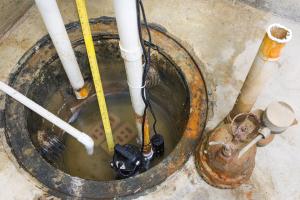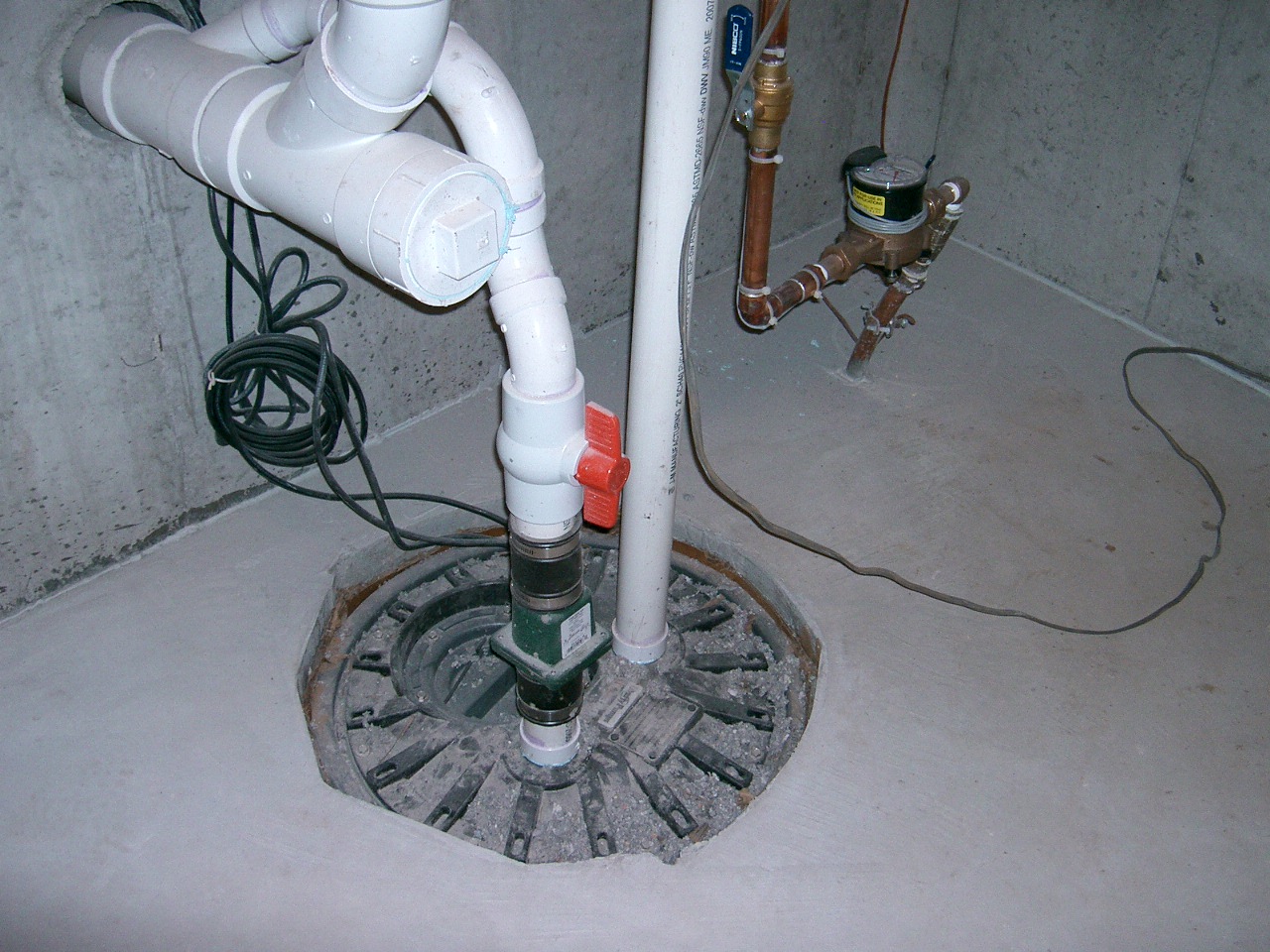Here underneath you will discover some awesome news involving Steps to Cleaning Your Sump Pump Properly.

Sump pumps are vital parts in several homes, specifically in areas prone to flooding or excessive moisture. They aid protect against water damages by successfully getting rid of excess water from cellars or crawl spaces. Nevertheless, like any other appliance, sump pumps require normal upkeep to ensure they function effectively when required the most. Cleaning your sump pump is an essential part of its maintenance, and comprehending just how to do it properly can conserve you from expensive repair work and prospective calamities.
Intro
Maintaining a clean sump pump is important for its correct performance and durability. Ignoring this crucial task can lead to clogs, breakdowns, and inevitably, water damages to your home. Therefore, discovering just how to clean a sump pump is important for property owners that depend on these devices to maintain their cellars dry and secured.
Recognizing the Sump Pump
Before diving into the cleansing procedure, it's necessary to have a basic understanding of how a sump pump functions. Normally installed in a pit or basin below the cellar flooring, a sump pump contains numerous essential parts, including a pump, a float switch, and a discharge pipeline. When water collects in the pit, the float switch turns on the pump, which then pumps the water out through the discharge pipeline, away from the structure's foundation.
Indicators of a Dirty Sump Pump
Understanding when your sump pump requires cleaning is critical for stopping possible malfunctions. Some usual signs that suggest an unclean sump pump include odd sounds during procedure, minimized water circulation, and noticeable particles in the pit. If you notice any of these symptoms, it's vital to cleanse your sump pump quickly to stay clear of any kind of additional problems.
Planning for Cleansing
Before you begin cleansing your sump pump, it's essential to take some security precautions. Begin by turning off the power to the pump to avoid any electric accidents. In addition, put on suitable protective equipment, such as handwear covers and goggles, to protect on your own from dust, particles, and prospective pathogens.
Step-by-step Guide to Cleansing a Sump Pump
Turning off the Power
Begin by disconnecting the power supply to the sump pump to stop any crashes while cleaning.
Getting Rid Of Debris and Dust
Use a pail or a scoop to eliminate any kind of visible particles, dust, or sediment from the sump pit. Dispose of the debris properly to avoid it from obstructing the pump or the discharge pipe.
Cleaning up the Pump and Drift Switch Over
Once the pit is clear of debris, meticulously get rid of the pump from the pit. Inspect the pump and the float switch for any type of indications of damage or wear. Utilize a soft brush or fabric to clean up the surface areas and get rid of any type of gathered gunk.
Flushing the System
After cleansing the pump and float switch, flush the sump pit with tidy water to get rid of any kind of continuing to be dirt or sediment. This will certainly aid make certain that the pump runs efficiently and successfully.
Looking For Proper Functioning
Before reinstalling the pump, carry out a quick examination to make certain that the float button activates the pump correctly. Pour some water into the sump pit and observe the pump's procedure. If whatever is working appropriately, you can reassemble the pump and reconnect the power supply.
Maintenance Tips to Maintain Your Sump Pump Clean
Along with routine cleansing, there are several upkeep tips you can follow to maintain your sump pump in optimum condition:
- Routine Inspection: Inspect your sump pump routinely for any type of indicators of wear, damages, or obstructions.
- Keeping the Surrounding Area Clean: Guarantee that the area around the sump pit is without debris, dirt, and obstructions.
- Checking the Pump Occasionally: Examine your sump pump occasionally by putting water right into the pit and observing its operation. This will help you identify any kind of possible problems before they escalate.
Verdict
Cleansing your sump pump is a critical element of its maintenance and ensures that it runs successfully when you require it the most. By following the actions laid out in this guide and including normal maintenance right into your regimen, you can extend the lifespan of your sump pump and safeguard your home from water damages.
6 STEPS ON HOW TO CLEAN A SUMP PUMP PROPERLY
UNDERSTANDING SUMP PUMPS
Your sump pump plays a crucial role in protecting your home by managing and removing excess water. It primarily functions as a “shield”, guarding your basement against the damaging effects of water accumulation. The pump is housed in a sump pit in the lowest part of your basement, and its job is to pump out any water that collects there.
During heavy rainfalls or when snow melts rapidly, water can infiltrate your basement, posing potential risks like flooding, structural damage, and harmful mold growth. Here, the sump pump springs into action, pumping out the intruding water and directing it away from your home.
SAFETY FIRST
Before cleaning, remember to prioritize safety. Disconnect the sump pump from the power source to prevent any accidental electric shocks. Also, wear sturdy gloves to protect your hands from any sharp or dirty components within the pump.
REMOVE THE SUMP PUMP
After ensuring your safety, the next step is to remove the sump pump from its pit. Doing this might require careful maneuvering as you don’t want to damage any pump components. Once removed, clean the sump pit to remove any accumulated debris or sludge.
INSPECT THE PUMP
Inspect the pump for any visible signs of wear or damage. Check the power cord, float switch, and impeller housing. If any components look worn out or damaged, consider replacing them to ensure optimal performance.
CLEAN THE PUMP
Thoroughly clean the pump with warm, soapy water. Make sure to rid it of any dirt, gravel, or other debris that might impede its performance. You can use a toothbrush to clean the small, hard-to-reach parts of the pump.
REINSTALL THE SUMP PUMP
- Reinstall the pump into the sump pit
- Make sure it’s positioned correctly to remove the water effectively
- Once it’s back in place, reconnect it to the power source
TEST THE PUMP
Finally, pour some water into the pit to ensure the pump works correctly. It should start automatically and begin pumping out the water; if it doesn’t, check the power source and the positioning of the pump.
Remember, while cleaning your sump pump is an essential part of home maintenance, hiring a professional plumber for a thorough inspection and cleaning at least once a year is also important. This will ensure that your pump is in optimal condition, ready to protect your home from potential water damage.
BEST PRACTICES FOR CLEANING SUMP PUMP DISCHARGE PIPES
- Regular Inspection: Regularly inspect your discharge pipes, especially during heavy rainfall or snowmelt periods. Look for any signs of blockage or damage. Early detection of problems can prevent serious issues down the line.
- Periodic Cleaning: Over time, sediment and debris can accumulate in the discharge pipes, impeding the flow of water. Regular cleaning helps keep the pipes clear and functioning efficiently. You can use a high-pressure water jet to effectively clean the pipes.
- Insulation During Winter: In colder climates, discharge pipes can freeze, blocking the outflow of water. Protect your discharge pipes from freezing temperatures by insulating them with foam pipe insulation. This will ensure the sump pump can continue to discharge water even in freezing conditions.
- Proper Positioning: The discharge pipe should be positioned to direct water away from your home’s foundation. Improper positioning can lead to water seeping back into the basement. Ensure the pipe is long enough and angled correctly.
- Installation of a Check Valve: A check valve prevents water from flowing back into your sump pit after the pump has pushed it out. Installing a check valve helps maintain the efficiency of your sump pump and reduces the risk of flooding.
- Minimize Pipe Turns: Every curve or turn in the discharge pipe can decrease the efficiency of water flow. By minimizing turns and bends in your discharge pipe, you can increase the efficiency of your sump pump.
https://www.fullspeedplumbing.com/how-to-clean-a-sump-pump-properly9999/

As a passionate reader on , I thought sharing that article was sensible. Appreciated our article? Please share it. Let someone else locate it. I value reading our article about How To Effectively Clean A Sump Pump.
Click
Comments on “Useful Techniques for Servicing Your Sump Pump”